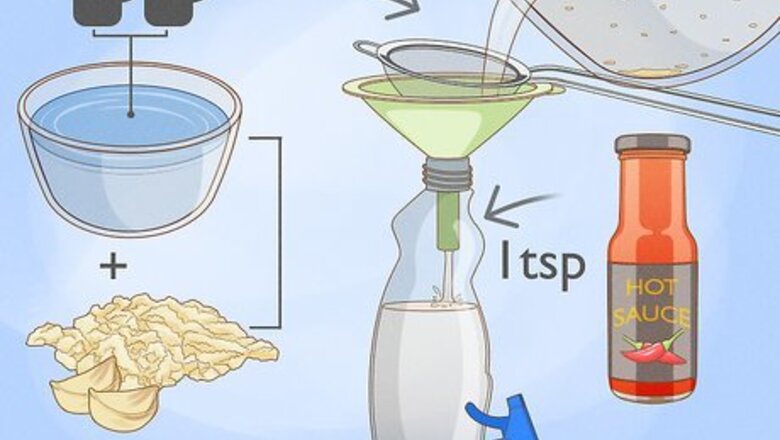
views
Using a Garden Spray
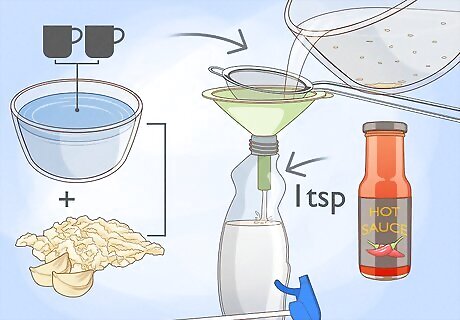
Make a garlic spray. Mince or blend two garlic bulbs in a blender. Then, combine them with 2 cups (470 ml) of water to make a fine mixture. Place the mixture in a container and let it sit for a day. Strain out the pulp and put the mixture in 1 gallon (3.8 L) of water in a spray bottle. For a more potent spray, add 1 teaspoon (4.9 mL) of hot sauce. You can then spray the tops and bottoms of the leaves on your herbs to get rid of aphids, whiteflies, and spider mites.
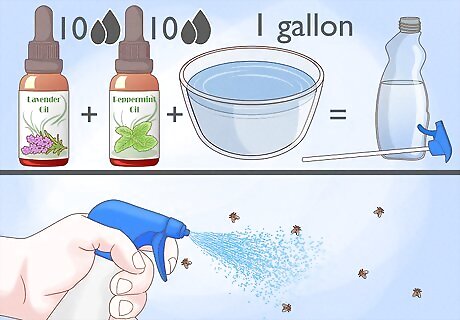
Use a spray with peppermint, lavender, or neem oil. Combine 10 drops peppermint oil and 10 drops lavender oil in 1 gallon (3.8 L) of water. Put the mixture in a spray bottle and apply it to your herbs to help get rid of fleas, flies, and gnats. This essential oils spray is also good for killing moths and spiders on your herbs. Neem oil is also great for killing and repelling pests in your garden. Combine 10 drops neem oil with 1 gallon (3.8 L) of water in a spray bottle. Look for essential oils that are high quality and safe to consume at your local health food store or online. This will ensure you are not at risk when you eat your herbs.
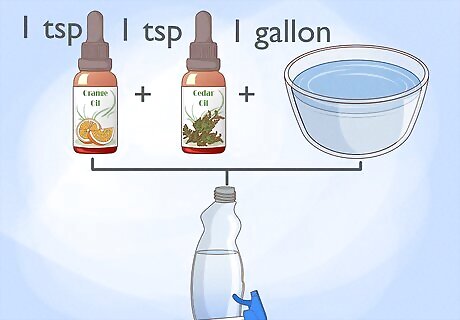
Make a spray with orange and cedar oil. Orange oil and cedar oil are great for getting rid of ants, fleas, and ticks. Combine 1 teaspoon (4.9 ml) of orange oil and 1 teaspoon (4.9 ml) of cedar oil with 1 gallon (3.8 L) of water in a spray bottle. You can then apply the spray to your herbs and to the bugs you are trying to kill. These essential oils work particularly well on ant colonies. Spray the ant colony daily with the oils to kill the colony and prevent it from coming back.
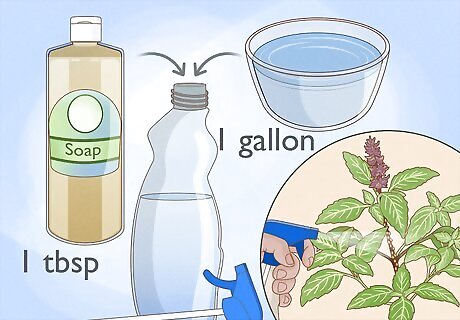
Use a soap-based spray. Get soap that is made of natural products, with no anti-bacterial properties. A mild liquid soap should be fine. Combine 1 tablespoon (15 ml) of soap with 1 gallon (3.8 L) of water in a spray bottle. You can then apply the spray to your herbs to get rid of aphids, spider mites, and whiteflies. You can add 1 tablespoon (15 ml) of rubbing alcohol to the spray to make it extra potent.
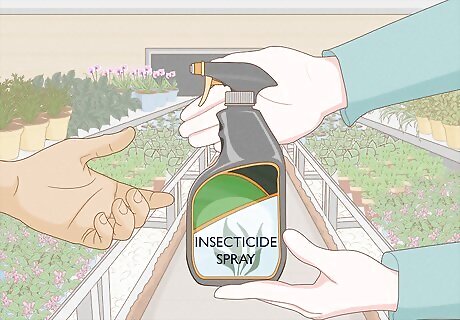
Look for insecticide spray at your local gardening center. If you’d prefer to buy an insecticide for your herb garden to kill bugs, get one that is organic and contains natural ingredients. Avoid insecticides that contain harsh chemicals, as this can negatively affect your garden and make your herbs unsafe to eat. Speak to a representative at your local gardening center for advice on a good brand to buy for your garden. You can also search online for the best insecticides on the market.
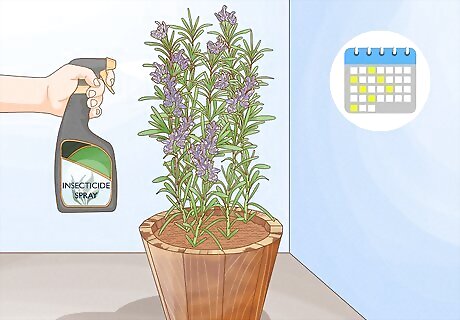
Apply the spray every three to five days until the pest is gone. Spray the herbs in the early morning or evening, when it is cool outside. Apply the spray to the entire plant from side to side and top to bottom, as well as the top and bottom of all the leaves. Apply spray again to the herbs after it rains, as the rain tends to wash away the spray. If the pest does not go away after one month, you can try applying neem oil to the pest to get rid of it. If the pest does not go away after two months, you may need to try a strong insecticide. Spraying the plant from top to bottom with cool, clean water may be enough to remove unwanted pests. If the pests are in small numbers, then you can also remove them by hand.
Setting Bug Traps
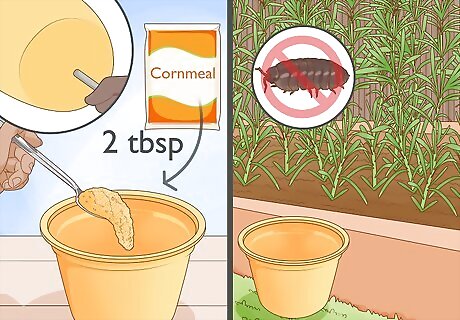
Make a bug trap with cornmeal and a plastic container. Take a small plastic container with no lid and cut a small hole at the base, just large enough for a sow bug or slug to climb in. Fill the container with 2 tablespoons (30 ml) cornmeal. Place it in your herb garden so it can catch and kill the sowbugs. You may need to replace the cornmeal once a day to help attract and kill the bugs. You can also use Diatomaceous Earth in the trap instead of cornmeal to kill sowbugs and other crawling insects.
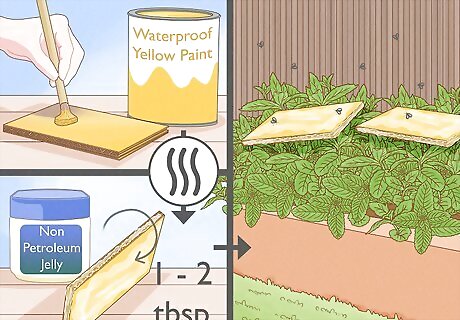
Create a sticky trap with paint and Vaseline. Take a plastic card or a piece of cardboard and paint it with waterproof yellow paint. Once the paint dries, apply 1 to 2 tablespoons (15 to 30 ml) of Vaseline or non-petroleum Jelly to both sides of the cardboard. Place the cardboard just above the canopy of the herbs to attract and kill whiteflies and gnats. You may need to reapply the Vaseline to the cardboard regularly to ensure the trap works.
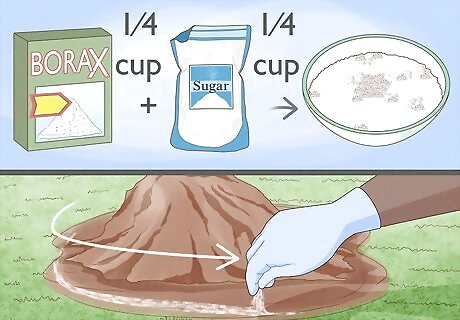
Make an ant trap with borax and sugar. If you have ants in your herbs, get rid of them by combining ⁄4 cup (59 ml) of borax with ⁄4 cup (59 ml) of white sugar in a bowl. Sprinkle the mixture around the ant hills and travel paths. The ants will then carry the sugary mixture back to their nest. The borax will kill the ants and prevent them from returning. You can get borax at your local hardware store or online.
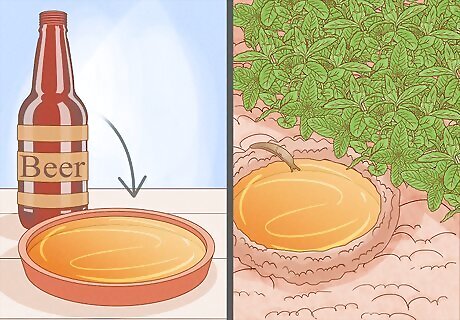
Create a beer trap for slugs. Fill a shallow plastic container or saucer with stale beer. Then, place the trap in your garden. Slugs are attracted to the yeast in beer, and will drown in the trap. Replace the beer in the trap regularly to ensure it attracts and kills slugs.
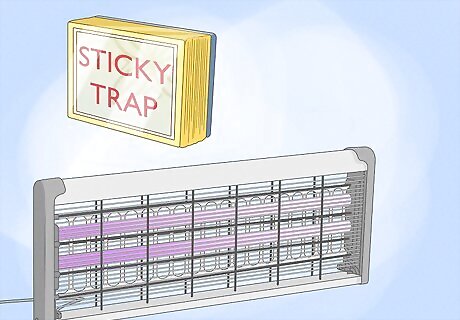
Buy a commercial bug trap. If you’d prefer to buy traps to catch and kill bugs in your garden, head to your local gardening center or search online. Look for traps that are easy to set and clean. Most commercial bug traps will be tailored to specific bugs or pests. Make sure the traps do not contain any harsh chemicals that can seep into your garden, as this can lead to other issues and make your herbs inedible.
Preventing Bugs
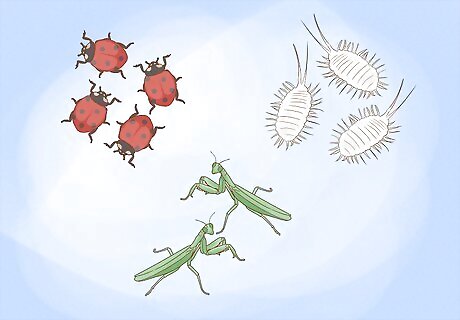
Buy beneficial bugs for your herb garden. Beneficial bugs like ladybugs, mealybugs, and praying mantis can help to kill off pests and maintain a natural balance in your garden. These beneficial bugs will not eat your herbs either, and will make it easier for you to keep bad bugs out. You can buy beneficial bugs online or at your local gardening center. Release the bugs at night, right after you have watered your garden. This will ensure they stay in your garden and eat off pests.
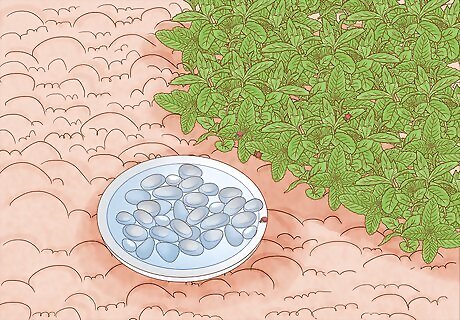
Attract beneficial bugs to your garden naturally. Put out saucers with pebbles and water in your garden so ladybugs and mealybugs are drawn to your herbs. You can also put in plants with small flowers near your herb garden so these bugs are attracted to the nectar and stay close to your herbs, killing off other pests.
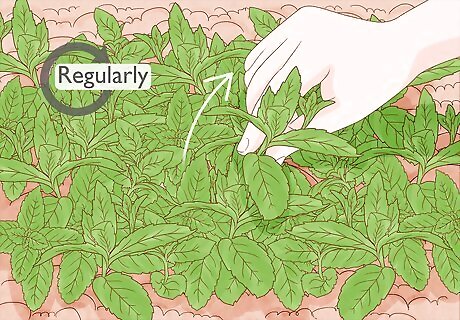
Trim and pinch back the herbs regularly. Use clean gardening shears to trim your herbs regularly so they can grow in healthy and do not attract a lot of pests. You can also use your thumb and forefinger to pinch back any buds on your herbs that are growing out of control. This will keep your herbs healthy and pest-free. Allow at least half of your herbs to flower so they attract beneficial bugs. You can then pinch or trim the other half to maintain a nice balance in your garden. EXPERT TIP Ben Barkan Ben Barkan Garden & Landscape Designer Ben Barkan is a Garden and Landscape Designer and the Owner and Founder of HomeHarvest LLC, an edible landscapes and construction business based in Boston, Massachusetts. Ben has over 12 years of experience working with organic gardening and specializes in designing and building beautiful landscapes with custom construction and creative plant integration. He is a Certified Permaculture Designer, is licensed Construction Supervisor in Massachusetts, and is a Licensed Home Improvement Contractor. He holds an associates degree in Sustainable Agriculture from the University of Massachusetts Amherst. Ben Barkan Ben Barkan Garden & Landscape Designer Did You Know? The best way to avoid pests is to choose grow hardy, healthy plants, keep them well-watered, and fertilize the soil. If a plant is stressed, it will be more likely to be attacked by insects, but plants that are growing in a healthy environment might not need any insecticide at all.

Include herbs that are natural deterrents to bugs. Some types of herbs will naturally keep bugs away from your herb garden. These deterrent herbs include mint, lemongrass, fennel, and basil. Add one or two of them to your herb garden to help ward off pests.

















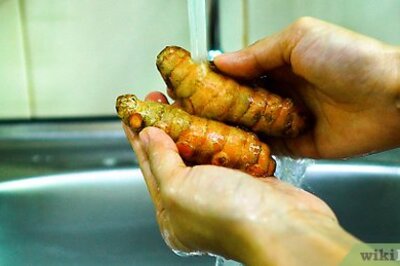


Comments
0 comment